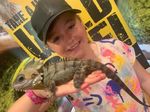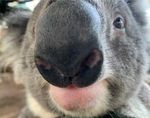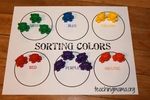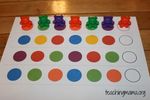Half of 2021 is Gone - Little Assets Melbourne City
←
→
Page content transcription
If your browser does not render page correctly, please read the page content below
Little Assets
ADULTS ARE JUST OUTDATED CHILDREN – DR SEUSS
Melbourne City
Half of 2021 is Gone!!!
Wow!!! We are in July now. It seems crazy how quickly time is flying.
From July onwards we actually get really busy with lots of activities
including parent-teacher interviews, special day celebrations and also
some fabulous and exciting incursions.
AT LITTLE ASSETS We have booked in Wildlife Action to come to centre on 30th of June
for a 3 hr 'action-packed’ educational workshop”
NAIDOC Week ----------------------------------------- 5-11
Pyjama Day---------------------------------23rd & 26th Children from all rooms will be introduced to the amazing World of
Wildlife Incursion (Australian Animals)-------------- 30 Australian Animals!
th
Australia certainly has some very unique, weird and wonderful
AROUND THE COUNTRY
creatures!
NAIDOC Week -------------------------------------------- 4 - 11 What live animals would be visiting us?
World Population Day--------------------------------------- 11 REPTILES, skink, monitor, gecko, fresh water turtle, python snake
Eid al-Adha ------------------------------------------------19 - 23 (non-venomous), crocodile, AMPHIBIANS frog species BIRDS owl +
National Pyjama Day -----------------------------------------23 others MAMMALS a selection of joey kangaroo, potoroo, bettong,
Asalha Puja Day ---------------------------------------------- 24 flying fox, gliding possum or ringtail possum.
International Day of Friendship --------------------------- 30
Schools Tree Day -----------------------------------30 – Aug 1Heal country! – calls for stronger measures to recognise, protect,
and maintain all aspects of Aboriginal and Torres Strait Islander
culture and heritage. Find out more about NAIDOC WEEK here
NATIONAL PYJAMA DAY – JULY 23
Support Little People with BIG Dreams! National Pyjama Day is all
about wearing your favourite pair of PJ’s to school to help The
NAIDOC WEEK – JULY 4-11 Pyjama Foundation raise funds for children in foster care. Funds
NAIDOC Week celebrations are traditionally held across Australia help to run a program called The Love of Learning Program where
each July to celebrate the history, culture and achievements of volunteers called Pyjama Angels are matched with a child in care
Aboriginal and Torres Strait Islander peoples. ‘Heal country’ is the and spend an hour a week focusing on learning-based activities.
theme for NAIDOC Week 2021. Find out more HERE
PROTEIN PANCAKES
Big feelings, major
meltdowns, trouble
sleeping, sound familiar?
PREP 10 min | COOK & SERVE as needed
NIGHTLIGHTS
ANNE CHIVARDI, JOYCE DUNBAR, KATE PETTY, LOUISA
SOMERVILLE | 4-8 year olds
INGREDIENTS
2 cups milk (or use coconut or almond milk) Nightlights is a book of stories to read to children, but stories with
2 cups flour (either do 2 cups spelt or 1 cup tapioca and 1 a difference. It's a collection of twenty interactive meditation
cup oat flour, but you could play around with different stories that have been specially written to calm and relax your
options) child at bedtime, while at the same time engaging and stimulating
4 tsp baking powder his or her imagination.
4 eggs
6 tbsp protein powder*
2 tbsp hemp or chia seeds HAPPY
* optional- use Nutra organics vanilla NICOLA EDWARDS | AUS
We breathe deep and expand like the galaxy. We breathe out
METHOD:
many thousands of stars, and if ever we start to feel panicky, this
reminds us of just who we are. The perfect soothing read for quiet
Simply blend all of the ingredients together and store in a
time, Happy gently encourages young readers to explore their
jar! I cook ours in butter in a cast iron pan and they never
emotions and the beautiful world around them, with stunning
stick. Serve with berries, banana, Greek or coconut
yoghurt, pure maple syrup or raw honey, cinnamon etc! illustrations and thought-provoking rhymes on every page.
Or as one of my kids loves - peanut butter!
SO, WHAT ARE THEY GETTING? THE BOY WITH BIG, BIG FEELINGS
BRITNEY WINN LEE AND JACOB SOUVA
Good fats, fibre, protein, omega 3’s, calcium, iron and
fresh fruit, all before they leave the house for the day!
Meet a boy with feelings so big that they glow from his cheeks,
spill out of his eyes, and jump up and down on his chest. The Boy
Love this recipe and want more? Go to Jo Kate Nutrition with Big, Big Feelings is relatable for any child, but especially for
Jo’s course The Nourished Family provides you with a realistic children experiencing anxiety and extreme emotions, or who have
approach to nutrition, health and cooking and will teach you been diagnosed with autism or as a Highly Sensitive Person.
foundational principles to use for the rest of your life. Find out
more here.FOCUS: A “million-word gap” for children who aren’t read to at home
? Young children whose parents read them five books a Based on these calculations, here’s how many words kids would
day enter kindergarten having heard about 1.4 million have heard by the time they were 5 years old: Never read to,
4,662 words; 1-2 times per week, 63,570 words; 3-5 times per
more words than kids who were never read to.
week, 169,520 words; daily, 296,660 words; and five books a day,
1,483,300 words.
This “million-word gap” could be one key in explaining differences
in vocabulary and reading development, said Jessica Logan, lead
“The word gap of more than 1 million words between children
author of the study and assistant professor of educational studies
raised in a literacy-rich environment and those who were never
at The Ohio State University. Even kids who are read only one book
read to is striking,” Logan said. The word gap examined in this
a day will hear about 290,000 more words by age 5 than those
research isn’t the only type kids may face. A controversial 1992
who don’t regularly read books with a parent or caregiver. “Kids
study suggested that children growing up in poverty hear about
who hear more vocabulary words are going to be better prepared
30 million fewer words in conversation by age 3 than those from
to see those words in print when they enter school,” said Logan, a
more privileged backgrounds. Other studies since then suggest
member of Ohio State’s Crane Centre for Early Childhood Research
this 30-million-word gap may be much smaller or even non-
and Policy. “They are likely to pick up reading skills more quickly
existent, Logan said.
and easily.” The study appears online in the Journal of
Developmental and Behavioural Paediatrics and will be published
in a future print edition. The vocabulary word gap in this study is different from the
conversational word gap and may have different implications for
Logan said the idea for this research came from one of her earlier children, she said. “This isn’t about everyday communication. The
studies, which found that about one-fourth of children in a words kids hear in books are going to be much more complex,
national sample were never read to and another fourth were difficult words than they hear just talking to their parents and
seldom read to (once or twice weekly). “The fact that we had so others in the home,” she said. For instance, a children’s book may
many parents who said they never or seldom read to their kids was be about penguins in Antarctica – introducing words and
pretty shocking to us. We wanted to figure out what that might concepts that are unlikely to come up in everyday conversation.
mean for their kids,” Logan said. “The words kids hear from books may have special importance in
learning to read,” she said.
The researchers collaborated with the Columbus Metropolitan
Library, which identified the 100 most circulated books for both Logan said the million-word gap found in this study is likely to be
board books (targeting infants and toddlers) and picture books conservative. Parents will often talk about the book they’re
(targeting pre-schoolers). Logan and her colleagues randomly reading with their children or add elements if they have read the
selected 30 books from both lists and counted how many words story many times. This “extra-textual” talk will reinforce new
were in each book. They found that board books contained an vocabulary words that kids are hearing and may introduce even
average of 140 words, while picture books contained an average of more words. The results of this study highlight the importance of
228 words. With that information, the researchers calculated how reading to children. “Exposure to vocabulary is good for all kids.
many words a child would hear from birth through his or her Parents can get access to books that are appropriate for their
5th birthday at different levels of reading. They assumed that kids children at the local library,” Logan said.
would be read board books through their 3rd birthday and picture
books the next two years, and that every reading session (except Source: news.osu.edu (2019, April 04). A ‘million-word gap’ Retrieved from
https://news.osu.edu/a-million-word-gap-for-children-who-arent-read-to-at-
for one category) would include one book. They also assumed that
home/
parents who reported never reading to their kids actually read one
book to their children every other month.
SIMPLE MATH ACTIVITIES USING
MANIPULATIVES
Counting bears or counting animals are a wonderful tool to have
in your home for use now but also as your children enter Primary
School. You can use them to sort, count or use them with
patterns. These multicoloured manipulatives can be purchased
cheaply online or in most toy stores. You could also use the
houses from monopoly or Lego blocks.
Sorting colours with bears: Another way to use these tools is for
Patterns with bears: In word create some simple pattern cards to sorting activities. Sorting is a key mathematics skill and these
help get your child started, like the ones in this picture, or simply activities provide the foundation for early numeracy learning.
download these ones via the link. The first page is an AB pattern, Children can sort the bears into colours, if you have different
meaning two colours alternate in the pattern. The second page is animals, they could sort them into types of animals too. You can
an ABC pattern, meaning three are three colours in the pattern. download and print both activity cards via the link below.
For this activity, your pre-schooler will set the coloured bear on
top of the matching colour to create a pattern. On the ABC pattern Source: Teaching Mamma (2019, August 10).15 Hands-On Math Activities for
cards, the last circle is left empty. That is for your child to tell you Preschoolers Retrieved from https://teachingmama.org/15-hands-on-math-
what colour it should be. activities-preschoolers/HEALTH & SAFETY: The Mental Health Benefits of Exercise
Does exercise help anxiety? “Running gives me the headspace
to focus on what I'm feeling when my anxiety gets really bad,"
says Cardiff student Seren Pritchard-Bland, 21, who ran the
London Marathon for the mental health charity Heads Together.
“I get panic attacks when I'm stressed out, but I find simply
getting out of the house with my trainers on makes me feel like
I've achieved something positive. Running is therapeutic – it's so
much healthier than being alone at home with thoughts spinning
around my head."
Why is exercise such a mood-booster? “Exercise is fantastic for
releasing tension, reducing stress and giving joy," says Hayley
Jarvis, programme manager for sport at the mental health
How do you feel after a workout? Even when you're purple
charity Mind. “Being active is one of the best things you can do
faced and desperate for a lie-down, you feel pretty pleased
to help yourself bounce back in times of adversity. Getting out of
with yourself for giving it a go, right? Once the initial your head and into your body can actually improve your ability to
breathlessness subsides after a workout, it's common to feel think clearly and break up your racing thoughts."
like you have more energy and those troublesome
problems might not seem quite so big as before. While they Find your mood-boosting workout If the thought of hauling
might seem intangible these benefits are as real as – and yourself out of bed to jump around feels as impossible as
arguably more important than – the results you see around climbing Everest, start slow. You can always stop if you're not
your waistline. “A prescription of exercise can help you have feeling it, but all it takes is a few minutes of low-intensity
a healthy mind," says GP Dr Paul Stillman, from Media exercise – even just walking – to trigger the release of pain-
Medics. “Exercise stimulates positive endorphins, clears your relieving endorphins. Every stretch releases tension and every
head and lifts your mood. I think we'll see more and more movement makes oxygen flow a little faster. Look out for your
people prescribed exercise as a mood-booster." tipping point, because the more aware you are of the moment
your mood warms up, the better it feels.
Healthy body = healthy mind
We're starting to realise just how vital exercise is for our Which workout will make you happy? To build friendships… try
wellbeing, both mental and physical. New research from the team sports like football and netball. “Social connectivity is
Department of Health published in October 2017, reported 12 incredibly important," says Hayley. “When we're struggling, we
per cent of cases of depression could be prevented with an hour tend to isolate ourselves, but being with other people can
of exercise each week. Up your workouts to three a week and motivate you to get out there. Playing team sports is great if you
you could reduce your risk of depression by 30 per cent. feel lonely."
Can exercise help you handle stress? To calm your mind… try yoga, pilates and t'ai chi. Hayley explains:
Sure thing. A team of neurologists at Stanford Medical School, “Exercise that works with your breath is particularly good for
U.S., studied brain scans and found regular exercisers have more improving mindfulness, which can also calm a spinning head and
grey matter in the prefrontal cortex, which governs stress- improve your mood."
management. But when we feel down, everything can feel
overwhelming. Time to crawl into a hole? In fact, the more Source: thebodycoach.com (2018, November 29). The Mental Health
stressed out you feel, the more you need to look after yourself – Benefits of Exercise Retrieved from www.thebodycoach.com/blog/the-
mental-health-benefits-of-exercise143.html
and a workout can be the happiest medicine. Research has
?fbclid=IwAR2BvHmw8NQcUUvZ0WtUqlXoR
shown that exercise is clinically proven to stimulate serotonin, 40_IE8CLo7dKCjNMxebYTawadhOVnKupP0
your natural feel-good neurotransmitter.
ENERGY EFFICIENCY AT HOME DURING WINTER
Now that you know the average Australian home uses about 40% of their energy on heating and cooling, you can put a plan
in place to save this winter. Even small changes to the way you heat your home can lead to some helpful savings, so here
are five handy tips:
There are a few different ways to conserve energy when temperatures become colder:
• Keep curtains open during the day for rays of sunlight to warm the room and close them at night to keep out chilly
drafts.
• Only heat the rooms you use most – reduce the area you heat by closing doors to rooms you’re not using, so you’ll use
less energy to heat the rest of the house.
• Keep your thermostat between 18°C and 20°C – every degree you reduce heat can save up to 10% on your energy use.
• Use a draft stopper – if cold air is getting in, warm air is getting out. Invest in door seals, draft-proofing strips and door
snakes to stop heat escaping and reduce your heating costs by up to 25%.
• Consider the old-fashioned way of bundling up with an extra layer of clothing while at home before turning the heater
up an extra degree.
Source: www.originenergy.com.au/blog/smart-ways-to-save-this-winter/Child Care Subsidy rates from 12 July
30 June 2021
Child Care Subsidy (CCS) rates are adjusted at the start of
each financial year based on the Consumer Price Index (CPI).
The following rates will take effect from 12 July 2021:
Combined annual income
The amount of CCS a family can get depends on their
combined annual income.
Being Environmentally Responsible CCS family income thresholds
Up to $70,015
Sustainability is more than gardening, worm farms or
composting. As educators, we have to think beyond More than $70,015 to below $175,015
these green activities. Sustainability has shifted away $175,015 to below $254,305
from being just about environmental education to
thinking about it as education for sustainability (Davis,
$254,305 to below $344,305
2010). Although both education threads are separate, $344,305 to below $354,305
they are certainly not isolated. Education for $354,305 or more
sustainability is about linking the ‘about’ with the
‘doing’. - Yvonne Paujik Curriculum Lead Teacher Campus The current family income thresholds are available on our
Kindergarten University of Queensland website.
Annual cap
Within our service children:
Families earning more than $190,015 and under $354,305
• Connect with the natural world Children use their will have a subsidy cap of $10,655 per year, per child.
senses to explore their surroundings through free Families earning under $190,015 will not have their CCS
play and guided discovery. capped.
• Learn to care for the environment through Play and The current annual cap is available on our website.
directed activities. This may be sorting items into
their correct bins, caring for ‘injured’ wildlife,
planting gardens, observing wildlife. From July 2022, we’re removing the annual cap. Find out
more about the removal of the annual cap.
• Observe sustainable practise through modelling from
our educators and daily practise. Hourly rate cap
Being environmentally responsible is neither a subject nor The maximum hourly rate we subsidise is based on the type
an ‘add on’, it is a way of thinking, a way of practice. of service you run.
Education for sustainability is interdisciplinary and
involves different members of the community with Service type Hourly rate cap
different expertise and knowledge collaborating together
to tackle issues that affect sustainability. (children below school a
Centre Based Day Care $12.31
We hope children think of sustainability as being broader
than the environment, to thinking about how people and
change can influence every living thing. Encourage and SUPERMAN RACE
support your child and the next generation at home by Short simple activities to get some active minutes in the day.
being environmentally responsible in every possible way.
Lay in a line on your stomach and take flight – just like your favourite
superhero! Once you’re laying down, lift your arms up
National Quality Framework | Quality Area 3: so that your upper chest comes off the ground too. Hold that position.
Physical Environment Element 3.2.3 Environmentally Who can hold it the longest? Maybe you have to lean to one side to go
responsible around a building, over a bridge…
LITTLE ASSETS MELBOURNE CITY
Email: melbournecity@hotmail.com.au
Phone number: (03) 96202887You can also read


























































